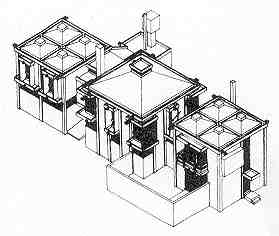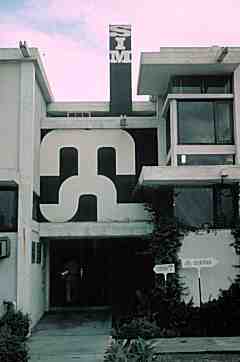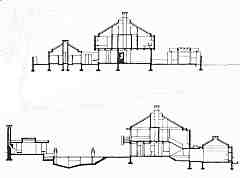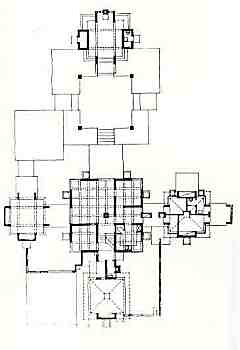OITAVO LIVRO
THE AMERICAN EGYPTIAN STYLE
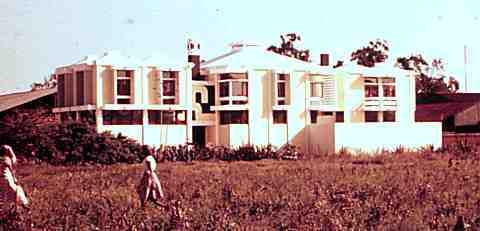 |
On the progeny of the pyramidal kindergarten and the Yes-House.
"Styles at first used to move slowly and live long, one at a time. Later there were fifty seven simultaneous varieties, all old. Then some showed others how they could invent their own ways, but the strain was too much for most, and the new died just before it became the style.
Soon after, almost everybody who had been watching the new got together in white, flat-topped uniforms and started the one way. Anybody who wasn't in, was dead.
On the road, the whitest amongst them invented new rules, merrily approved and readily borrowed — to look the wrong way we all wore blinkers - to be in the wrong place we all pulled ourselves up on thin legs. The legs got steadily fatter and the voices were so many that we were all soon back where others had started.
When the big fog came, some had said it was nice, and in Italy they dug up the dead, but Kahn spoke out through his ducts and he said that buildings would henceforth be what they wanted to be, and many rejoiced because buildings were going to be what they needed to become — athletic and well served; because buildings were at last going to find their own faces.
Paradoxically buildings everywhere became more and more like Kahn had wanted his own to be - born old and overfed: And so began the American Egyptian style, hot today and gone tomorrow — because architects are all eyes and no ears.
The pyramidal kindergarten and the yes-house are both members of the worldwide progressive family, both isolated little machines a émouvolr, both yes-ing with a foreign accent."
From
The American Egyptian Style World Architecture, One, 1964 Editor John Donat, Studio Vista (London).
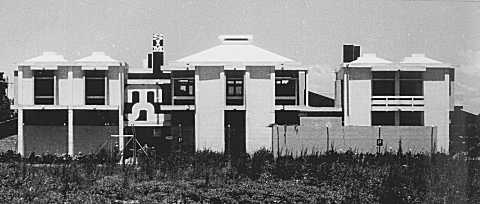 |
|
Yes House, Lhanguene, LM. |
|
| Yes House - perspective under construction | 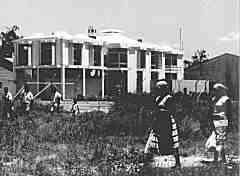 |
|
Pyramidal Kindergarten, Sommersschield, LM |
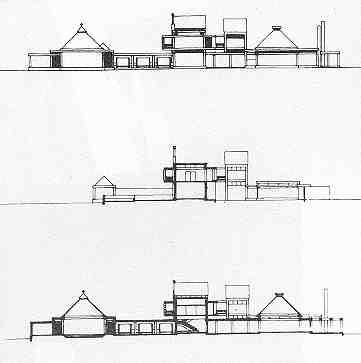 |
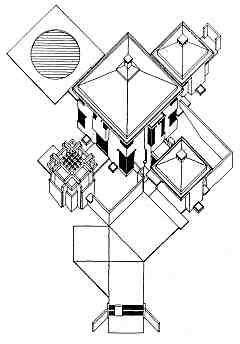 |
Desirello House, Illoro, Johannesburg. |
| Service Station - Komatipoort |
| HOME PAGE | CONTENTS PAGE | PREVIOUS PAGE | NEXT PAGE |
